After the fire it was critical to address the issue of damaged books, especially those that were wet. Hundreds of thousands gallons of water were used in the rescue effort, and that water drained down into different parts of the library like Room 117, which was full of books stored on compact shelving.
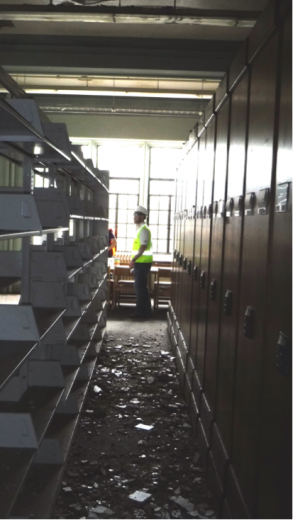 Room 117 covered in ceiling tile debris from water damage.
Room 117 covered in ceiling tile debris from water damage.
In order to preserve wet books it is best to freeze them. The process of freezing the book turns the water into a solid and stops further damage and mold growth. The majority of wet books were part of the circulating collection housed in Room 117. At this point, 3,357 boxes of wet books have been transported out of Hale Library.
Packing and gathering books is a long process that has been complicated by the fact that library personnel could not enter the building for several days. When they finally could start working, the water damage had left the building with no power.
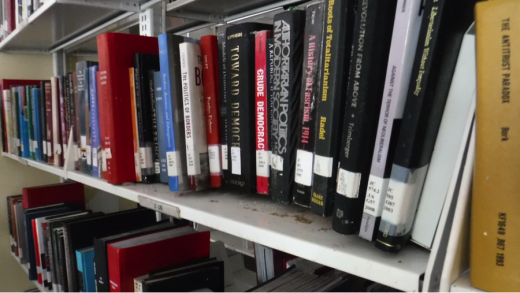
Since the books were stored on compact shelves powered by electricity, at first they couldn’t move the shelves to access the books. Compact shelving moves on chain-link rails, which allows for libraries to provide more books in less space.
“We were unable to initially power up the shelving in Hale 117 with battery back-ups, so our wet materials stayed in un-airconditioned, nonclimate-controlled conditions for a number of days,” said Michelle Turvey-Welch, Head of Metadata, Preservation, and Digital Initiatives.
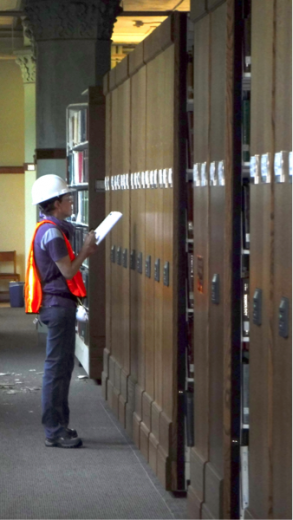
Once a professional came in to remove the chains on the rails of the compact shelving units, the process of moving wet books became easier.
There is an established protocol that preservationists use when freeze drying books. First, they need to be packed in a specific way: They must be placed spine down in a box that has been thoroughly lined with heavy plastic. Then, those boxes need to be tightly packed in order to help the books maintain their shape.
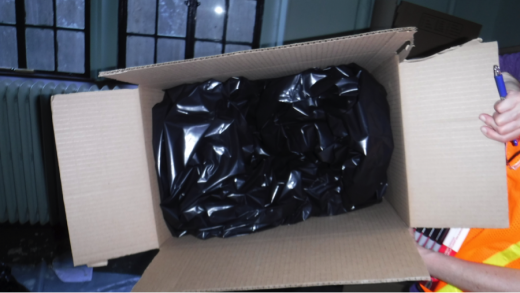
Next the boxes are sent to the freezers where they sit for anywhere from several days to several weeks depending on how wet the book is. Housing and Dining Services at K-State was kind enough to loan us the use of their industrial freezer, which is located in the Pittman Building. The freezer is anywhere between negative ten and negative fifteen degrees.
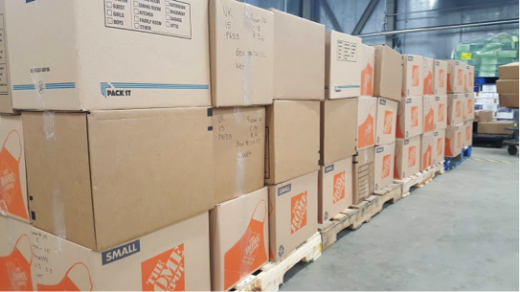
The books that were in the freezer have been loaded into refrigerated trucks and shipped to a Belfor regional technical service center that specializes in water damaged documents and books in Ft. Worth, Texas. The wet books will be put into vacuum freeze dryers that will draw out the rest of the moisture and turn it to water vapor. Then the books will undergo the final restoration and cleaning process.
I hope that you will continue to post about the whole book recovery process. I pray that you will be able to save a majority of the books.
We will definitely continue to post updates! A whole series is in the works on the process of cleaning the soot-contaminated books. Loss is inevitable under the circumstances, but much will be salvageable.
This is tragic, but the cleanup process is absolutely amazing.